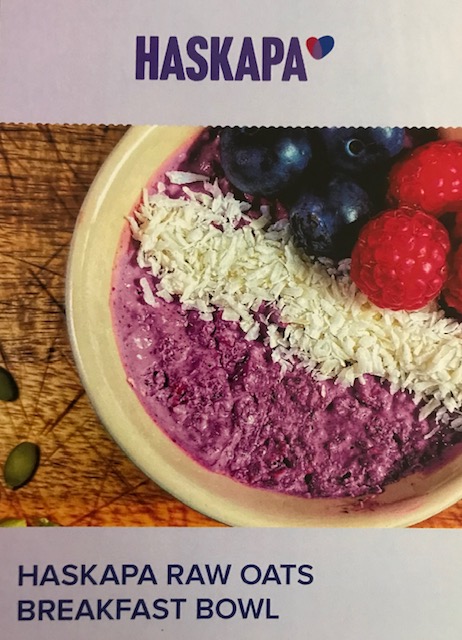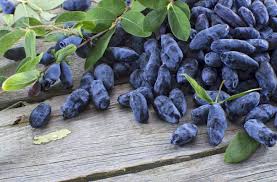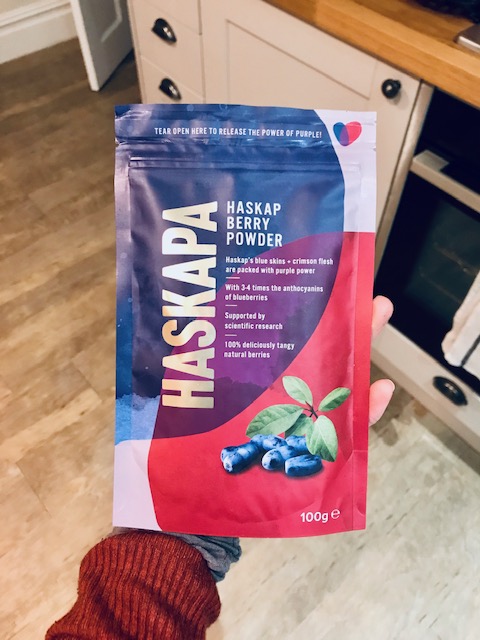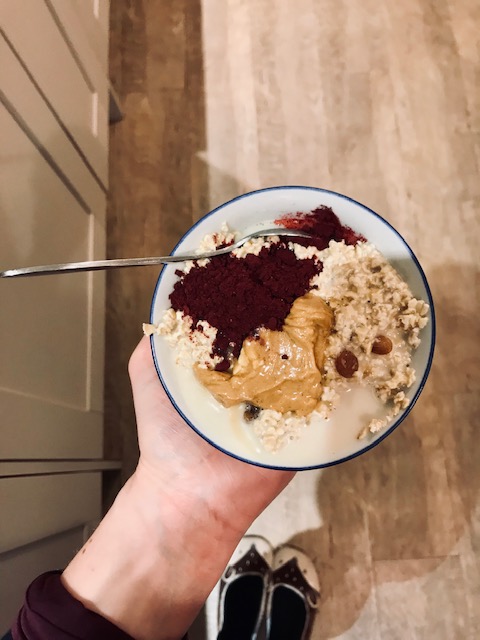It’s cold and it’s grey. What better way to cheer up your day than with some bright purple food?! This week I’ve been trying out the new superfood berry, haskap, in the form of the purply-red Haskapa powder. Lauded for their high anthocyanin content, the haskap berry boasts four times more anthocyanins than blueberries.

What are haskap berries?
The haskap berry is an edible blue honeysuckle. It is native to northern hemisphere countries including Canada, Japan and Russia. They grow on deciduous leafy bushes which have an amazing ability to survive hostile, northern winters.

What are anthocyanins?
Anthocyanins are the pigments in plants that give them their purple colour. Research has linked them to a wide variety of health claims, including a link with increased longevity, cardiovascular health and protection against cancer and dementia.
Anthocyanins are present in high concentrations in blackcurrants and blueberries, the skins of aubergines, red cabbage and cherries. Haskap berries have one of the highest recorded anthocyanin values of any berry.
What are the benefits of anthocyanins?
Extensive research (outlined and footnoted on the Haskapa website), points to benefits including:
- Antioxidant – helps to fight chronic oxidative stress associated with the development of many chronic diseases
- Anti-inflammatory – helps to combat chronic inflammation, which is thought to play a role in the development of many chronic diseases
- Cardio-protective – anthocyanins are associated with reducing the risk of developing chronic cardiac diseases such as high blood pressure and heart attacks
- Neuro-protective – anthocyanins are linked to reducing the risk of cognitive decline as we age
- Role in sports nutrition – anthocyanins have important antioxidant, anti-inflammatory and vasoactive properties that have the potential to mitigate the development of exercise-induced oxidative stress and improve exercise performance
How much should I eat each day?
Scientists are recommending we consume 50mg anthocyanins per day, or the equivalent to one teaspoon of Haskapa powder.
How can I use Haskapa powder?
I’ve been enjoying Haskapa powder on my porridge in the mornings. It is delicious – tart and fruity, like a cherry mixed with a blueberry. It does make the porridge rather purple, so not the most photogenic, but it is really tasty.

Haskapa berry powder 
Haskapa powder with porridge and peanut butter
I’ve also been enjoying the powder in my protein smoothies, mixed with frozen bananas and berries, oat milk, flaxseed and protein powder, yum!
Haskapa also sent me some recipe cards with other recipe ideas including this yummy looking recipe for Haskapa chia pudding with sliced figs:
Ingredients
2 tsp Haksapa powder
4 tbsp chia seeds
1 cup almond milk
A splash of vanilla extract
Sliced figs
Method
- Slice the figs and press against the edges of the jar or set aside for decorating the top of the pudding
- Combine the Haskapa powder, chia seeds, almond milk and vanilla and mix well
- Spoon the mixture into your jars
- Lay figs over the top and leave overnight to set

About Haskapa
Haskapa was founded by husband and wife team Evie, a medical doctor, and Simon, a ‘green’ entrepreneur. They fell in love with the haskap berry in 2010 and found a way to combine their passions for the environment, holistic health and ethical business by growing the berries in Nova Scotia, Canada.
Harnessing the haskap’s taste and deep colour, they created a juice with the berries. However, Evie felt that from a nutritional perspective there was much to this berry than its distinct flavour. As a result the company set out to capture the berry’s unusually large amounts of naturally occurring anthocyanins.
After years of research and product development, a freeze-dried powder was created, retaining the high levels of the berry’s natural bioactive content.
The nutritional content of the haskap berry has created significant scientific interest. Investment in high level research studies investigating nutrition, health benefits and farming have been commissioned at top universities.
Leave a Reply